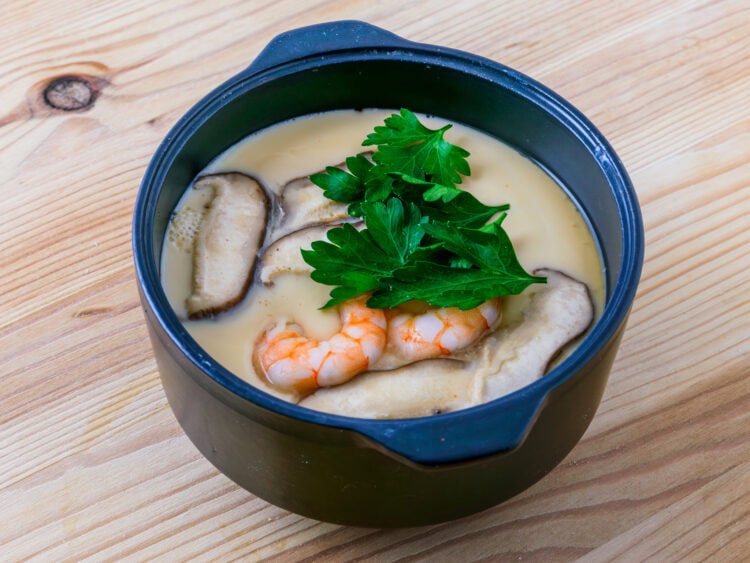Japan’s famous egg custard, perfect as an appetizer in both summer and winter!
Egg custard probably rings a bell for many dessert lovers. It is smooth, sweet, and above all quick and easy to make – a delightful way to end a meal.
Chawanmushi, however, offers a wonderful start to a meal, because this savory egg custard is usually served as an appetizer. Light and creamy, it is ideal for the summer months!
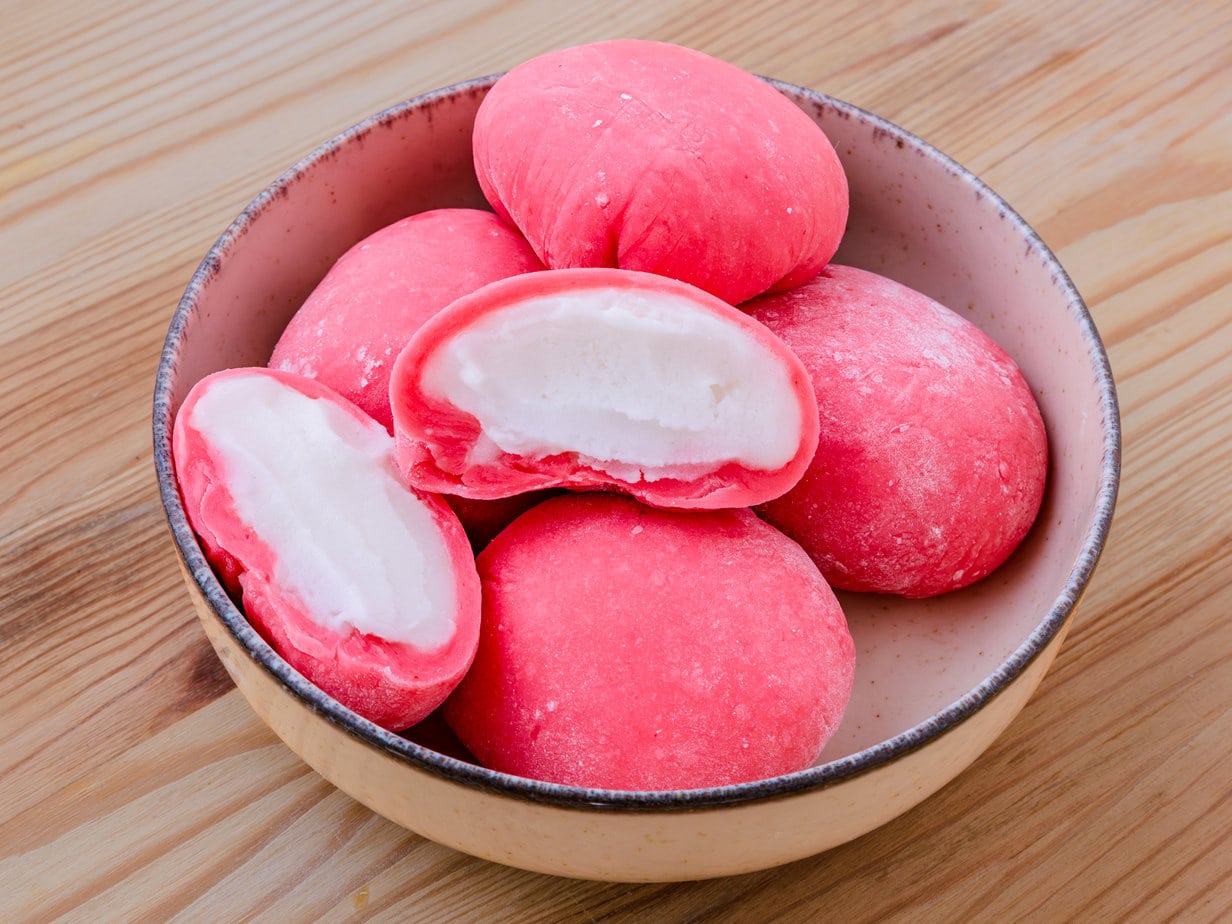
What is Chawanmushi?
For many people, chawanmushi is a gentle way to discover Japanese cuisine… and that is literally true! Traditionally served in a small tea cup, this silky-smooth egg custard is a classic appetizer found in many Japanese restaurants.
In fact, “chawanmushi” (茶碗蒸し) literally means “egg custard steamed in a tea cup”. People love its flan-like texture and umami flavors, which are far more complex than they first seem – hence its popularity.
Here I offer a classic version, but there are countless variations that follow the seasons. Chawanmushi often includes ginkgo nuts, prawns, shiitake mushrooms, kamaboko, and is seasoned with mirin and soy sauce. Serve it chilled or warm, whichever you prefer!
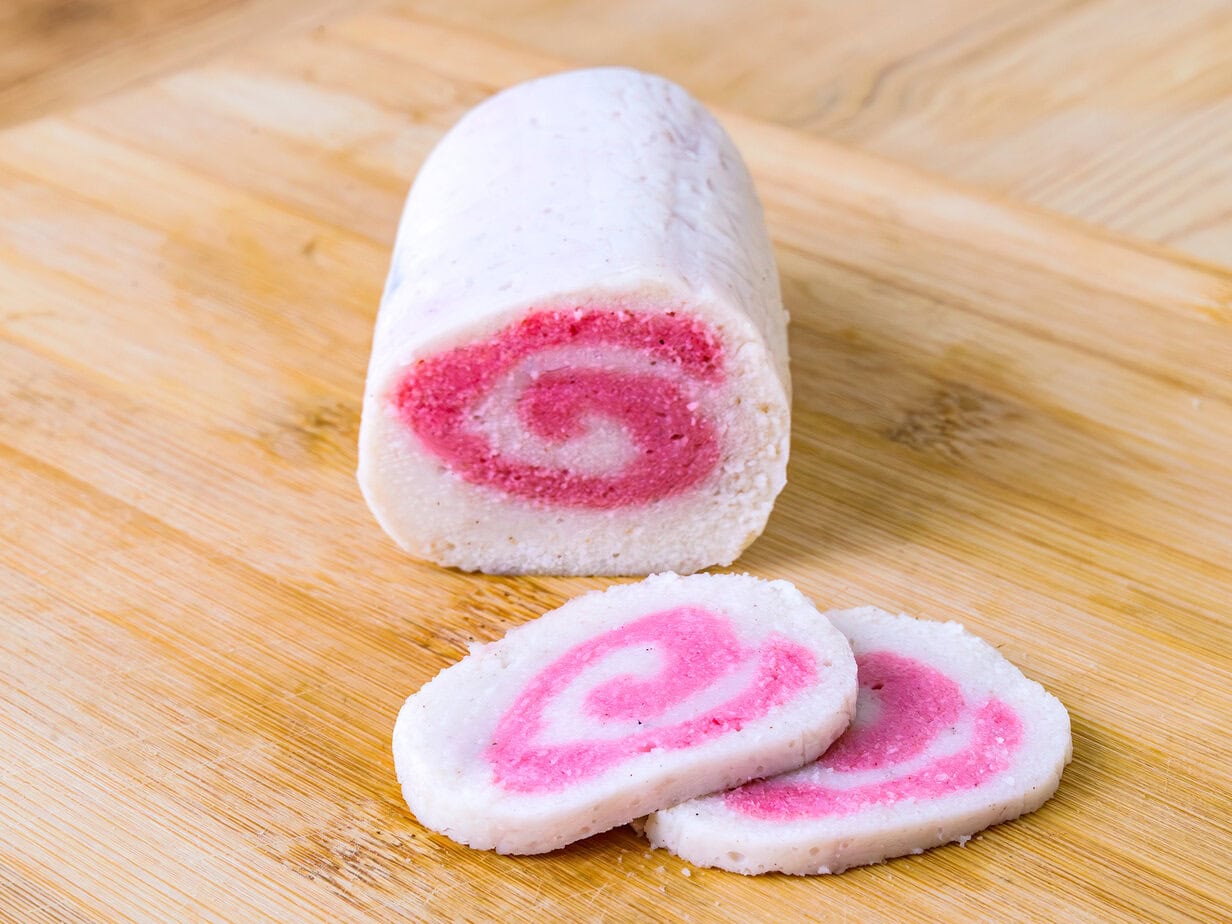
Where does chawanmushi come from?
Egg dishes in Japan – as we have already seen – are something of a love story. Just look at the Tamago Sando, Yakimeshi, Omurice or Tamagoyaki! They have become real culinary marvels and, inevitably, chawanmushi is one of them.
The dish originated in Nagasaki more than 300 years ago, during the Edo period (1603-1868), as part of Shippoku cuisine, a style deeply influenced by Chinese, Japanese, and European cooking. It is eaten with a spoon, not chopsticks.
During that era, Japan was closed to foreign trade, but Nagasaki was an exception for Chinese merchants. Some of them settled there and introduced a steamed egg dish from Hong Kong called Zhēng Shuǐ Dàn.
That dish became the foundation of Japanese chawanmushi. Legend has it that a retainer of the Matsuyama feudal domain later visited Nagasaki, loved the recipe, and spread it by opening a restaurant. Amazing what a single dish can do!
The main ingredients of chawanmushi

The eggs: They are the heart of the dish and are treated much like a flan. People love their silky, smooth texture once cooked.
Dashi: It is an umami-rich broth that sets the tone for the entire dish – an essential ingredient in Japanese cooking. You will often need to add a little salt with soy sauce and a hint of sweetness with mirin so it can fully reveal its flavor.
Soy sauce: In this recipe we use light soy sauce, which is saltier and more delicate than dark soy sauce. As noted, it is indispensable for balancing the flavors and highlighting the dashi.
Mirin: Like soy sauce, mirin provides just the right amount of sweetness along with an umami boost that allows the dish to release all its aromas.
Shiitake mushrooms: These firm, woodsy mushrooms add both texture and depth to the dish. In Japanese cooking they are used in all kinds of recipes, such as Yakisoba. Sometimes they can be replaced with shimeji mushrooms.
Prawns: Some people replace the prawns with chicken. There are also vegetarian versions with tofu and miso. Here the prawns lend a hint of briny freshness.
Mitsuba leaves: They are used in many dishes as a garnish – take Oyakodon for instance. They also add a touch of freshness while giving a crisp texture and a subtly bitter flavor, similar to celery and coriander.
Tips for perfect chawanmushi
To obtain a smooth and silky custard, pass the egg mixture through a fine-mesh sieve to remove any strands of egg white.
You can use any clear stock you have on hand. Dashi is the most common, but chicken stock also works very well. You can even use tomato water (simply strained tomato puree to obtain a clear liquid). Why tomato? It is packed with umami.
Cover your container with a bit of aluminum foil. This mainly prevents any possible drips from the steamer lid onto the custard, which would ruin the surface.
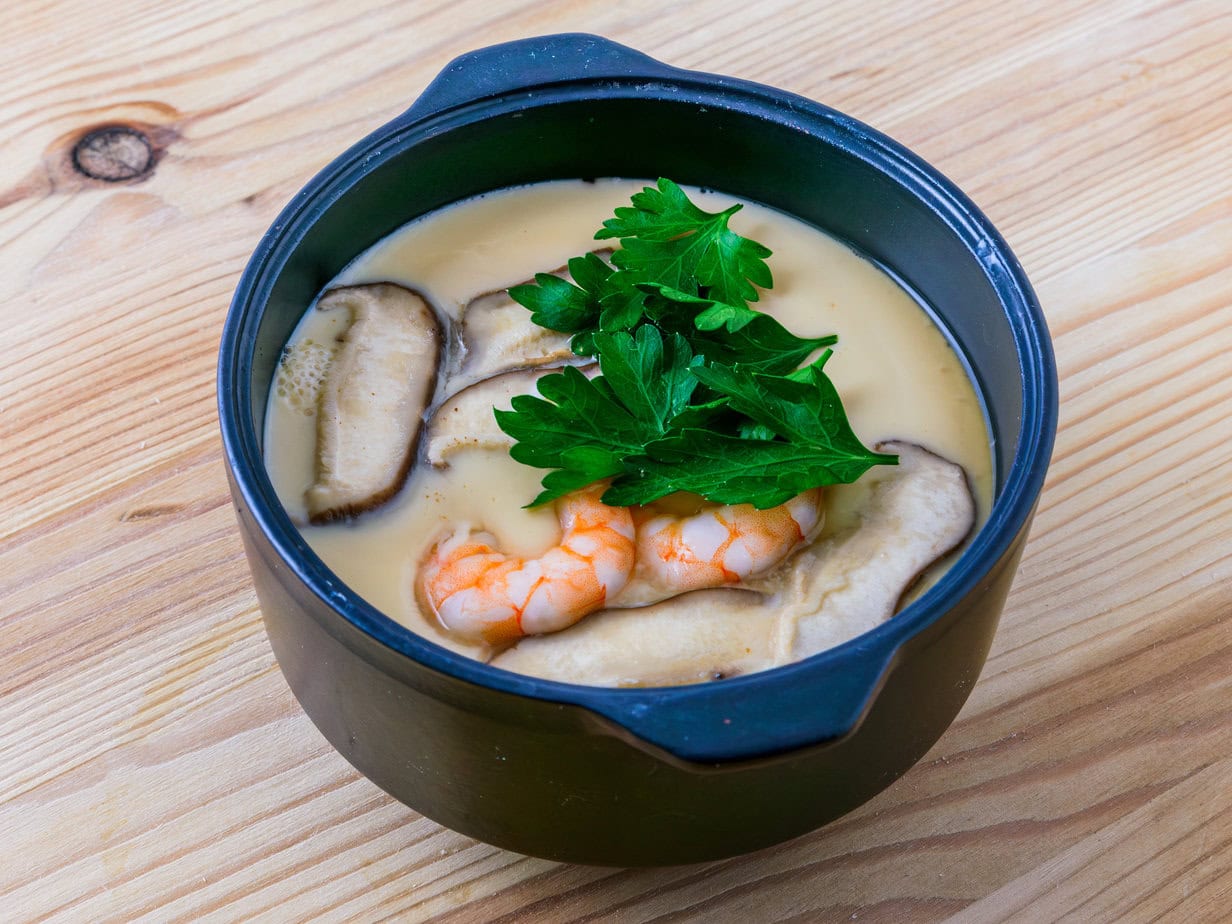
Chawanmushi – Japanese Savory Egg Custard
Equipment
- 4 Petits bols compatibles avec la cuisson vapeur
Ingredients
- 430 ml dashi stock
- 3 eggs
- 0.5 tablespoon mirin
- 1 teaspoon light soy sauce
- 50 g small shrimp raw, peeled
- 2 shiitake mushrooms fresh, thinly sliced
- mitsuba leaves for garnish
Instructions
- Gently warm the dashi until just lukewarm; it should not be hot enough to start cooking the eggs.430 ml dashi stock

- Set up a steamer over a gentle simmer, large and stable enough to hold the custard dishes. Keep the water at a low bubble to avoid bubbles or cracks in the custard.
- Whisk the lukewarm stock with the eggs until completely combined.3 eggs
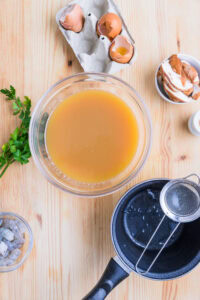
- Stir in the soy sauce and mirin.0.5 tablespoon mirin, 1 teaspoon light soy sauce
- Strain the mixture through a fine sieve twice to remove any egg strands and ensure an ultra-smooth custard.
- Pour the custard into heat-proof serving dishes, leaving a little space at the top.
- Divide the shrimp and shiitake evenly among the dishes.50 g small shrimp, 2 shiitake mushrooms
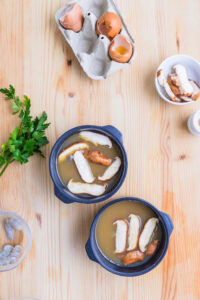
- Cover each dish loosely with aluminum foil to protect the surface from dripping condensation.

- Place the dishes in the steamer and cook for about 8 minutes. Timing will vary with vessel size and steamer temperature; the custard is ready when the surface is set and jiggles gently.

- Garnish with mitsuba and serve immediately.mitsuba leaves
